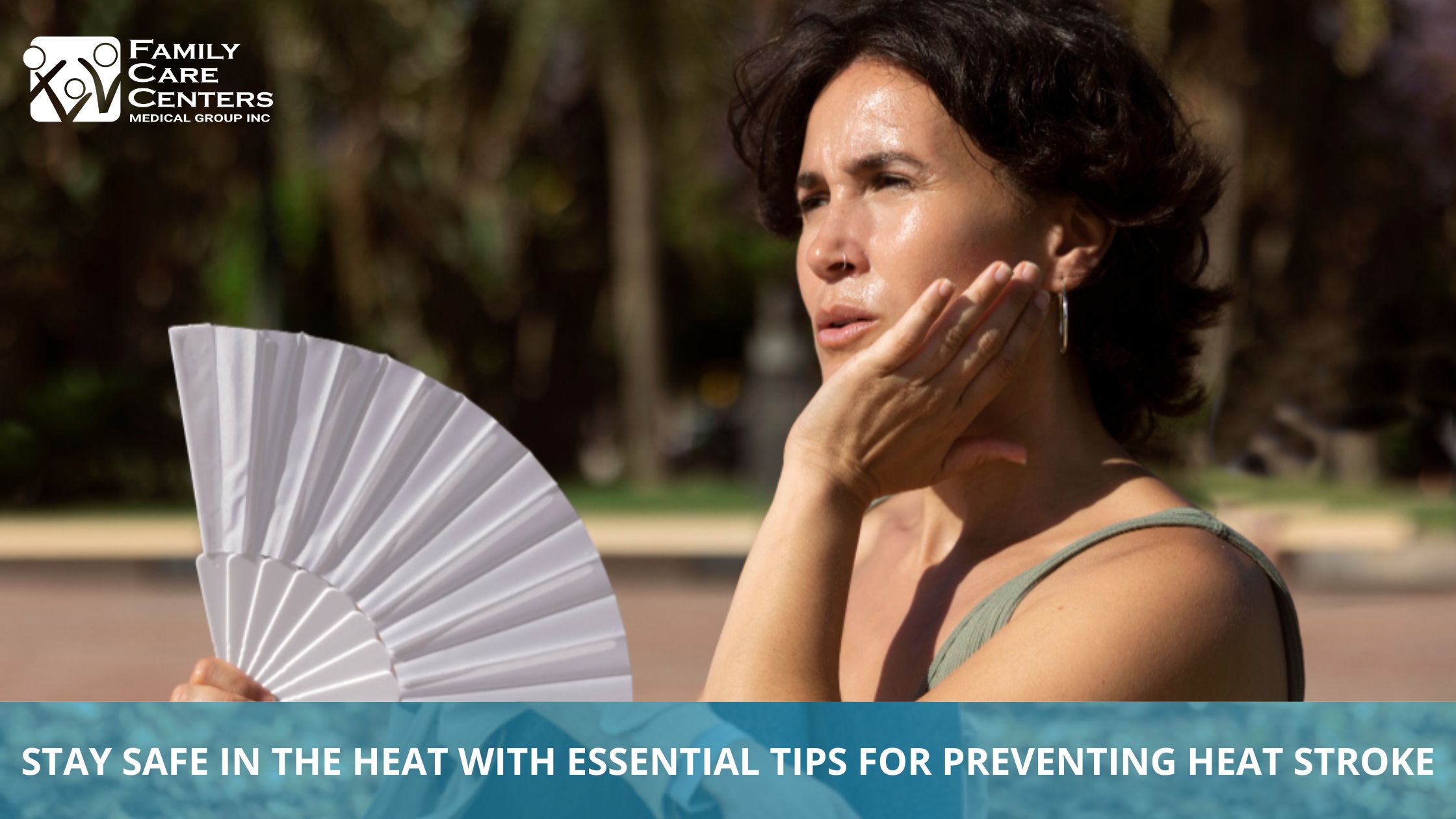

Fountain Valley Urgent Care Permanently Closed. We’re Here to Care for You at Our Other Locations.

Summer's here, and with it comes sunshine, beach days, and barbecues! But with all the fun, we must also be mindful of the heat stroke. This severe medical condition arises when your body loses its ability to regulate temperature and may damage organs. Don't let the heat steal your summer joy. By understanding heat stroke and taking some simple precautions, you can stay safe and relaxed all season long.
Heat stroke is the most severe form of heat illness. It occurs when your body overheats, usually due to extended exposure to high temperatures or intense activity. Heat stroke requires urgent medical intervention, unlike heat exhaustion, which can typically be addressed with rest and fluids.
The critical difference lies in their severity- while heat exhaustion and heat cramps serve as warnings with symptoms like heavy sweating and muscle cramps, heat stroke constitutes a critical emergency.
Summer heat can be hazardous for older adults. During hot weather, be on the lookout for these heat stroke symptoms in seniors:
This can manifest as disorientation, unusual behavior, or difficulty speaking clearly.
In extreme instances, the person may become unconscious or faint.
Pay attention to changes in skin texture. Dry, hot skin can indicate a lack of sweating, a sign of heat stroke. However, profuse sweating doesn't always rule out heat stroke.
In some cases, heat stroke can trigger seizures, particularly among seniors who may already have an underlying health condition.
A body temperature of 104°F (40°C) or higher is a red flag for heat stroke.
These simple tips can help you significantly prevent heat-related illness:
Water is your best friend! Stay hydrated by drinking fluids regularly, even if you're not thirsty. Aim for cool water or electrolyte-rich drinks, especially during hot weather and physical activity. Avoid sugary drinks and excessive alcohol, as they can dehydrate you further.
Limit your time outdoors during the hottest part of the day (usually between 10 a.m. and 4 p.m.). Wear loose-fitting, lightweight clothing made from breathable fabrics like cotton when you are outside. Look for shade whenever possible, and wear a wide-brimmed hat to shield your head and face.
While swimming can be a great way to cool down, be mindful of spending too long in the sun – even in the water. Social distancing shouldn't prevent you from looking out for others. Keep an eye on those around you, especially children and older people, for signs of heat stress.
If you experience dizziness, headache, nausea, or muscle cramps, these could be early signs of heat exhaustion. Take a break in a cool, shaded area, drink plenty of fluids, and rest. If symptoms worsen, seek medical attention immediately.
Plan vigorous activities for cooler parts of the day, like early mornings or evenings. Pace yourself and take breaks often, especially in hot and humid weather. If you're exercising outdoors alone, let someone know where you'll be and when you expect to return.
Some medications can impact your body's ability to regulate temperature. If you take medications regularly, discuss any potential interactions with heat sensitivity with your doctor.
Stay cool this summer with Family Care Centers Medical Group Inc. Heat stroke is a critical condition requiring proactive prevention measures, especially during summertime temperatures soar. By following the tips for heat stroke prevention, you can ensure your safety and of your loved ones from extreme heat. Remember to stay calm and informed to enjoy a safe and healthy summer. We are here to help with urgent medical care.
Contact us today to ensure a safe and fun-filled summer.